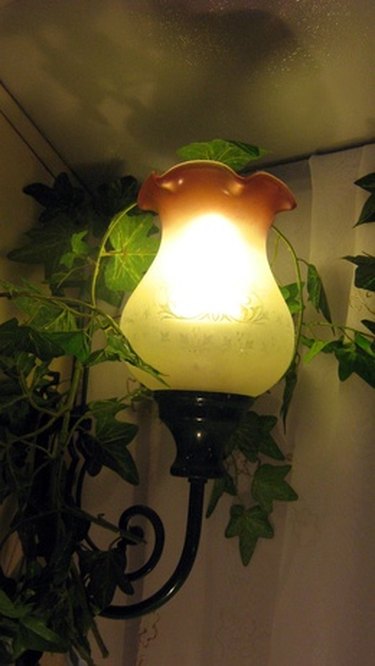Things You'll Need
Paper bag (optional)
Plastic bag (optional)

Whether you have a broken chandelier, pole lamp, wall fixture or overhead fluorescent light, you want to dispose of a broken lamp immediately. Broken glass and lamp pieces can injure children or pets. Disposing of a broken lamp isn't always as simple as putting the pieces in the garbage bin. Some lamps contain hazardous materials, and special disposal procedures are required to keep the chemicals out of landfills. Most lamp disposal methods are easy, but you will need to learn about your community's disposal options.
Step 1
Unscrew light bulbs from your broken lamp fixture. If the light bulbs are broken, put them in a paper bag. Then put the paper bag in a plastic bag and tie the plastic bag shut. If the light bulbs are not visibly broken, save them. You may be able to use them again.
Video of the Day
Step 2
Bag your light fixture in the same manner, if it's broken into small pieces. If you have a pole lamp that broke in half, you may want to skip the bagging as long as the pieces are not sharp.
Step 3
Contact the local public works department to learn the recommended disposal method for your broken lamp and light bulbs. Let the employee know what type of lamp you have (fluorescent or incandescent) and answer his questions.
Fluorescent bulbs contain mercury and other chemicals that classify them as hazardous waste. Each community has specific disposal procedures for such bulbs.
Step 4
Follow your community's disposal policies. You may be told to put bulbs and fixtures into the trash bin and dispose of them with normal household waste. You may recycle broken light fixtures (as New York City does) if they're made from metal, glass or plastic material. Or you may need to take the items to a landfill or hazardous materials collection site, or wait for a scheduled curbside hazardous materials collection in your community.
Tip
Be careful when disposing of broken light fixtures to avoid cutting yourself.
Video of the Day